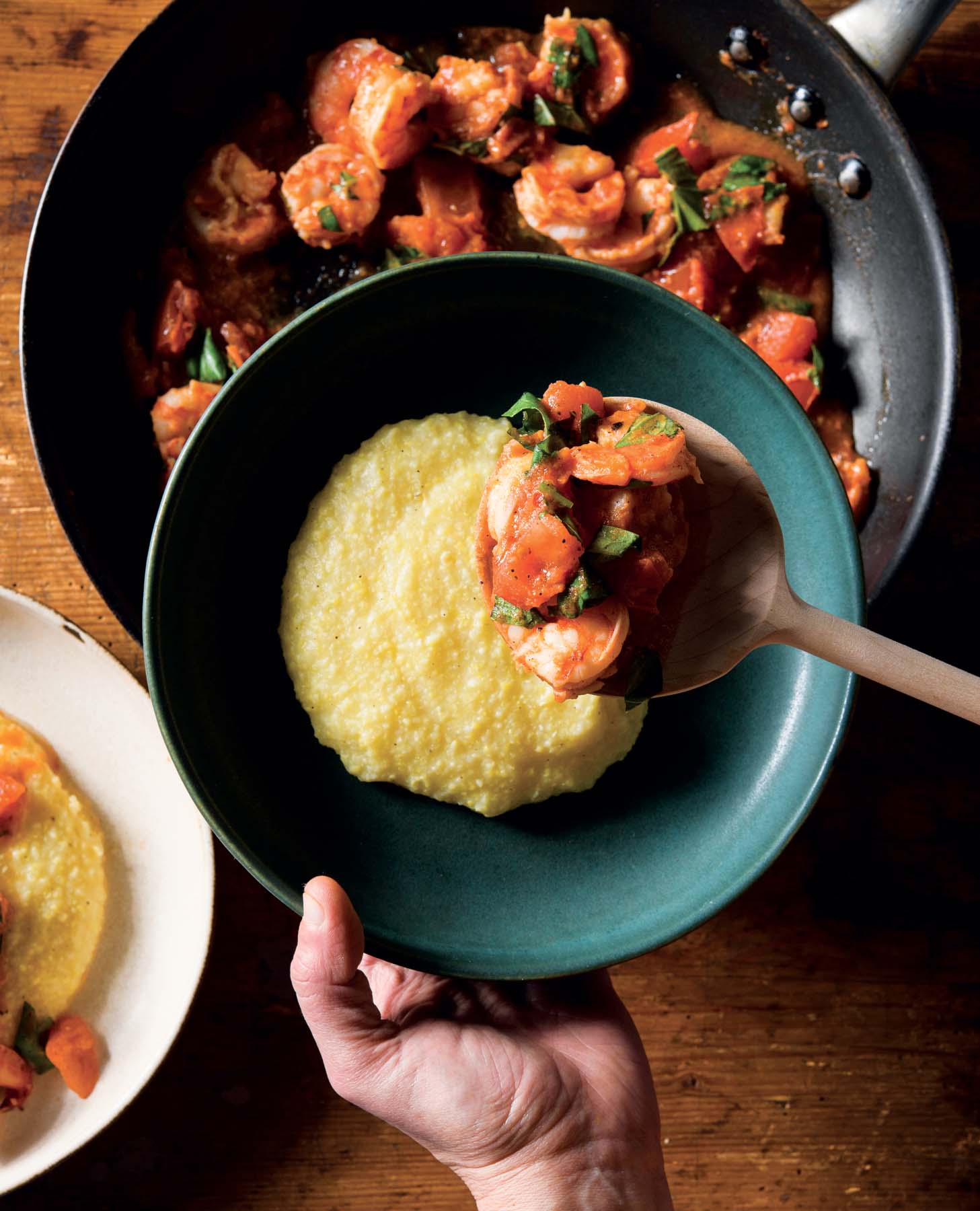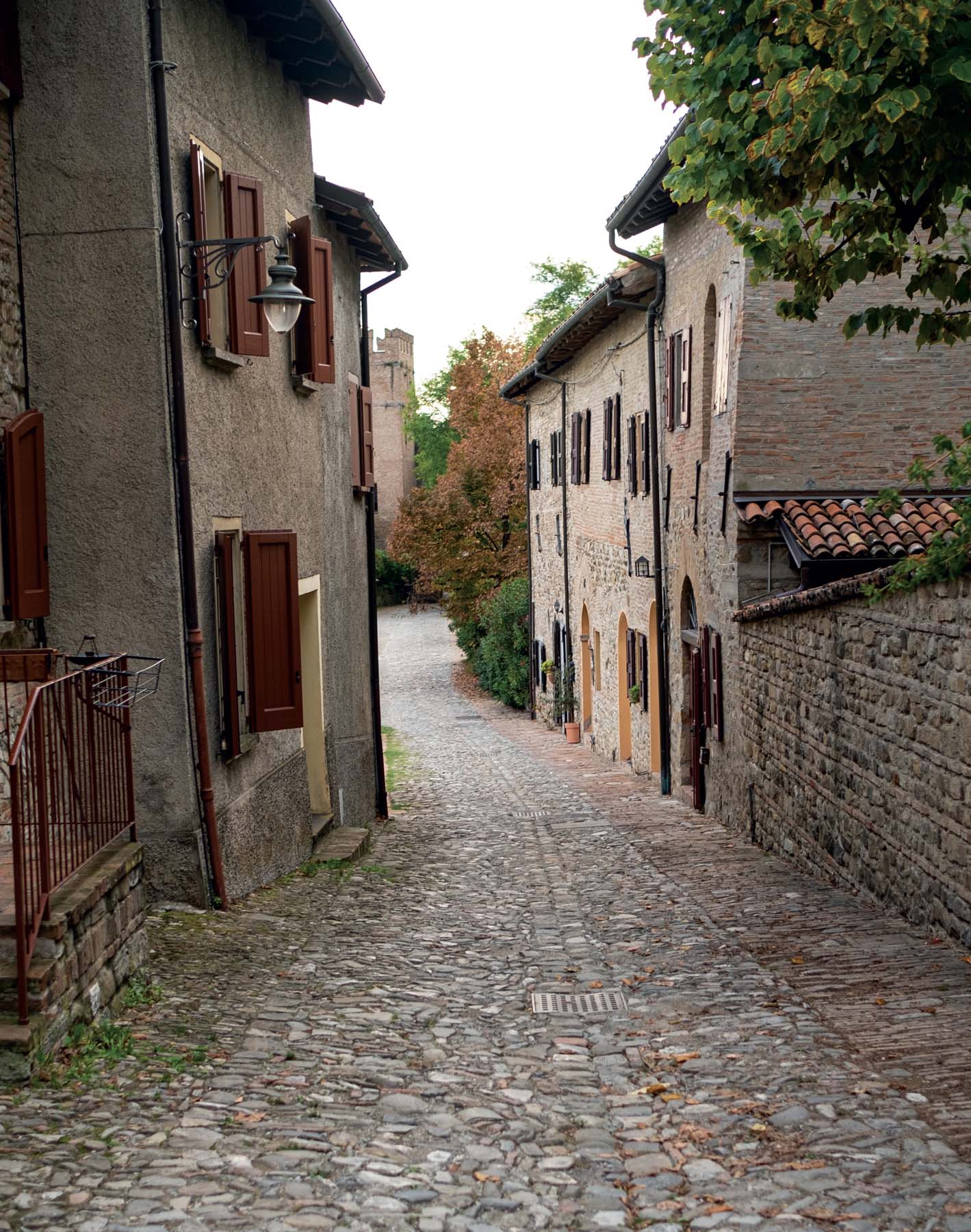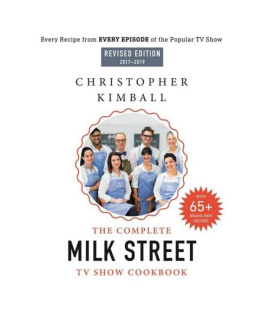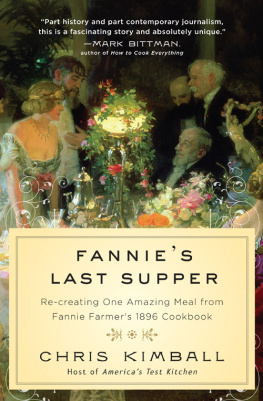Christopher Kimball - The Milk Street Cookbook
Here you can read online Christopher Kimball - The Milk Street Cookbook full text of the book (entire story) in english for free. Download pdf and epub, get meaning, cover and reviews about this ebook. year: 2021, publisher: Little, Brown and Company, genre: Home and family. Description of the work, (preface) as well as reviews are available. Best literature library LitArk.com created for fans of good reading and offers a wide selection of genres:
Romance novel
Science fiction
Adventure
Detective
Science
History
Home and family
Prose
Art
Politics
Computer
Non-fiction
Religion
Business
Children
Humor
Choose a favorite category and find really read worthwhile books. Enjoy immersion in the world of imagination, feel the emotions of the characters or learn something new for yourself, make an fascinating discovery.

- Book:The Milk Street Cookbook
- Author:
- Publisher:Little, Brown and Company
- Genre:
- Year:2021
- Rating:3 / 5
- Favourites:Add to favourites
- Your mark:
- 60
- 1
- 2
- 3
- 4
- 5
The Milk Street Cookbook: summary, description and annotation
We offer to read an annotation, description, summary or preface (depends on what the author of the book "The Milk Street Cookbook" wrote himself). If you haven't found the necessary information about the book — write in the comments, we will try to find it.
The Milk Street Cookbook — read online for free the complete book (whole text) full work
Below is the text of the book, divided by pages. System saving the place of the last page read, allows you to conveniently read the book "The Milk Street Cookbook" online for free, without having to search again every time where you left off. Put a bookmark, and you can go to the page where you finished reading at any time.
Font size:
Interval:
Bookmark:

Copyright 2021 by CPK Media, LLC.
Cover design by Julianna Lee and Jennifer Baldino Cox
Cover photographs by Jennifer Baldino Cox (left), Christopher Ward-Jones (top middle, right), Christopher Kimball (bottom middle)
Cover 2021 Hachette Book Group, Inc.
Hachette Book Group supports the right to free expression and the value of copyright. The purpose of copyright is to encourage writers and artists to produce the creative works that enrich our culture.
The scanning, uploading, and distribution of this book without permission is a theft of the authors intellectual property. If you would like permission to use material from the book (other than for review purposes), please contact permissions@hbgusa.com. Thank you for your support of the authors rights.
Little, Brown and Company
Hachette Book Group
1290 Avenue of the Americas, New York, NY 10104
littlebrown.com
twitter.com/littlebrown
facebook.com/littlebrownandcompany
Revised ebook edition: September 2021
Voracious is an imprint of Little, Brown and Company, a division of Hachette Book Group, Inc.
The Voracious name and logo are trademarks of Hachette Book Group, Inc.
The publisher is not responsible for websites (or their content) that are not owned by the publisher.
The Hachette Speakers Bureau provides a wide range of authors for speaking events. To find out more, go to hachettespeakersbureau.com or call (866) 376-6591.
Photography Credits: Connie Miller of CB Creatives except as noted by page: Channing Johnson, .
Food Styling Credits: Christine Tobin except as noted by page: Catrine Kelty, .
ISBN 978-0-316-40790-8
E3-20210708-JV-NF-ORI

This book is dedicated to the notion that cooking is the universal language of the human spirit.


In the Italian hilltop village of Monteveglio, we met Paolo Parmeggiani of Trattoria del Borgo who prepared passatelli in brodo.
Monteveglio is a small village on top of a mountain 12 miles west of Bologna. There are cobblestone streets and stone houses, and its closed to traffic. It could easily double as a movie set; the one that offers the authentic rural Italian experience. Remains of Roman villas date back to the 1st century, though the area has been inhabited since the Neolithic period. There are two main attractions: the pieve, or rural church that has a baptistery, and our main destination, a small restaurant/hotel called Trattoria del Borgo. The church sits at the very top of the summit, a monk in classic Hollywood garb (brown robe; rope belt) is mowing the lawn, smiling to the occasional tourist, but oblivious to their coming and going.
The trattorias owner, Paolo Parmeggiani, is thoroughly modern in the Italian style: affable, charming and the consummate host. On his stone patio overlooking the valley, he explained some of the culinary history of the region. After the wheat was harvested, fields would be burned and any remaining wheat berries would be gathered by the poor (hence the term, farina dei poveri). A related term, cucina povera, is an important concept in Italy. It combines a style of cooking that is authentic, local and from the land. Other common culinary terms are cucina espressa and cucina immediata, which also describe passatelli, the quick homemade pasta dish we are about to make, a mixture of breadcrumbs, eggs and grated cheese, passed through a potato ricer into boiling water and served with chicken broth.
Paolo had three bowls prepared, one filled with breadcrumbs, one with eggs, and the other with finely grated Parmesan. (Parmigiano-Reggiano is made in Emilia-Romagna and so it works itself into almost every dish.) I asked about the recipe and was told that one used six handfuls each of breadcrumbs and cheese plus eggs as binder. He mixed by hand, which took just minutes, until he had a soft dough which was placed into a metal potato ricer, extruded over boiling water, cut into short lengths with a knife, and cooked for a few minutes, like spaetzle. The only other ingredient besides salt was nutmeg which, oddly enough, made all the difference, adding just enough interest to provide character. Passatelli is served in a bowl with chicken stock and, if you are in Emilia-Romagna in the fall, copious shavings of modestly-priced white truffles. It was one of the best dishes of my life. Also the fastest.
This was just one of the lessons learned from Milk Street Television, but perhaps the most important. Simplicity of preparation is something to be honored since it reflects an understanding of ingredients and technique and a true appreciation for the culinary arts. What you put into a recipefamiliarity rather than extravagant techniqueis the measure of what you get out of it. And, in the case of passatelli, the reward is great indeed.
This lesson was repeated in Mexico City with Eduardo Garca, who cooked a pot of beans on a chinampa (a floating island) in the canals of southern Mexico City, only accessible by boat. A sofrito of onions, chilies, tomatoes and garlic was added at the end of cooking to preserve the fresh flavor. A chili salsa was thrown together using the bottom of a beer glass as the pestle. And since we had no spoons, we used rolled-up blue corn tortillas and drank beer out of caguamas (large bottles). Thousands of miles traveled for a pot of beans. And it was worth every mile of the journey.
Other travels took us to northern Israel. We learned Palestinian cooking with Reem Kassis, author of The Palestinian Table. She invited us into her parents home for a feast of maqlubeh (a spiced rice and meat casserole with fried vegetables) with as many dishes as there were friends and relatives at the table. On a tour of the Galilee Valley, we also tasted maftool, an Arab pasta, similar to couscous, that was cooked with onions and chicken; kaak asfar, a sweet turmeric-colored bread with ground nigella and sesame seeds; smeediyeh, fine bulgur mixed with caramelized onions and greens, including dandelion, mallow, and purslane; hashweh (the word means stuffing), a mix of rice and meat with allspice, cinnamon and nutmeg; freekeh, smoked wheat berries, cracked and dried, often served as a pilaf; and a fragrant rose petal jam that her mother makes and serves over a simple cornstarch pudding.
Travel changes ones perception of what food is. Its not exotic or something to be worshipped; its simply what others around the world are making for dinner. And what joins all of us together around the table is a universal love of hospitality and a familiarity with our ingredients, our techniques and our recipes. This transforms the kitchen into a place of generational continuity and comity as opposed to the professional kitchen, which too often is bathed in tears and sweat.
At long last, cooking does not come from a book or a television show. It comes from the very hearts of our being, stretched out through our arms, connected to the past, into the warm, earth-plucked ingredients and then into skillets and ovens.
We are preparing food from the past and into our future, and that is the greatest cooking lesson of all.

Font size:
Interval:
Bookmark:
Similar books «The Milk Street Cookbook»
Look at similar books to The Milk Street Cookbook. We have selected literature similar in name and meaning in the hope of providing readers with more options to find new, interesting, not yet read works.
Discussion, reviews of the book The Milk Street Cookbook and just readers' own opinions. Leave your comments, write what you think about the work, its meaning or the main characters. Specify what exactly you liked and what you didn't like, and why you think so.



